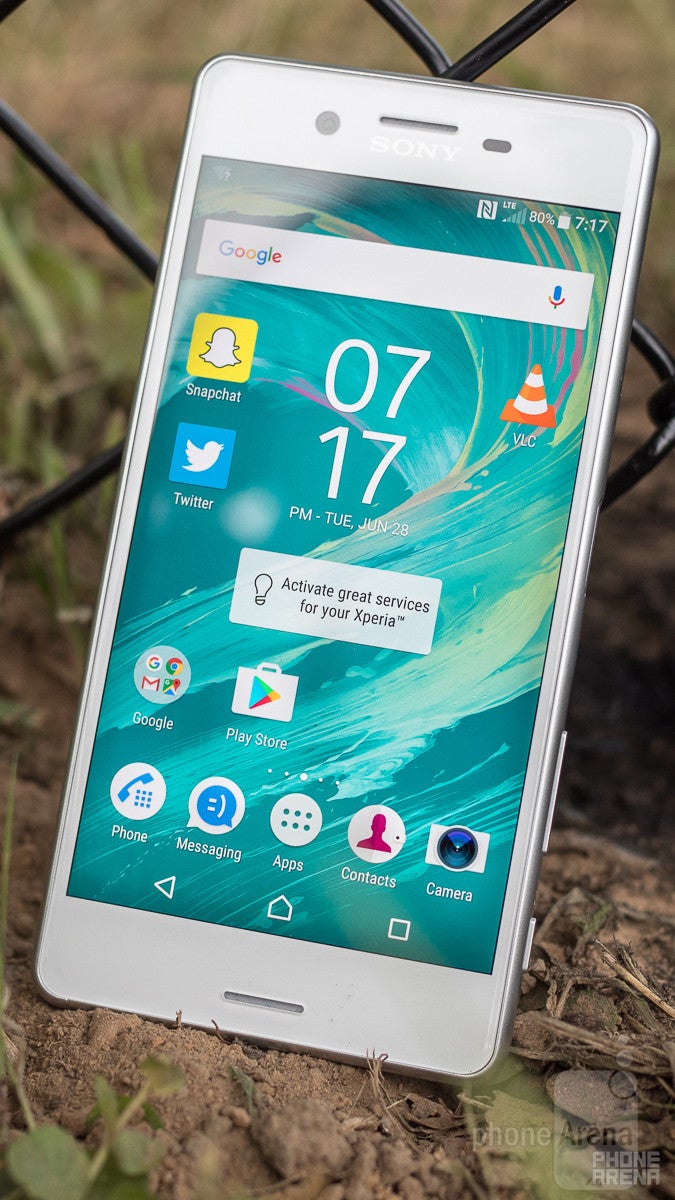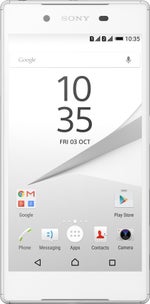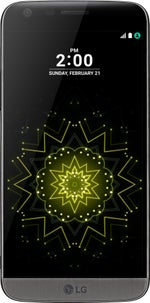Sony Xperia X Performance Review

Introduction
It's a new day for Sony, as the company turns the spotlight from the Xperia Z models that for so long dominated its smartphone lineup to welcome a new series of handsets, to this year's Xperia X family. And while last year may have left you wondering if the Z5 or the Z5 Premium was supposed to be the real flagship, in 2016 there's an unmistakable king of this smartphone mountain, in the form of the Xperia X Performance.

In the box:
- Sony Xperia X Performance
- Micro USB cable
- Fast charging adapter
- Quick-start guide
Design
First impressions aren't everything

In a world where far too many handsets look the better part of identical to each other, Sony's managed to stand out from the pack with phone designs that are distinctly the company's own. Boxy handsets with clean lines and appliance-like looks are almost the Volvos of the smartphone world, and with the Xperia X Performance, the manufacturer manages to stay true to its roots while still experimenting with new materials.
Gone is the Xperia Z5's heavy reliance on glass, as the Xperia X Performance picks up a handsome brushed aluminum back panel. It looks really nice, keeping the same general component layout of last year's phone while trying on a new facade. And visually, it works really well. Unfortunately, it doesn't quite feel as premium as it looks, and from the way that metal back comes across as perilously thin to the touch, and the way it reverberates so easily when the phone's speakers are engaged, we found ourselves wishing the Xperia X Performance's hardware gave the impression of being a little more robust.

Sony comes very close to making a beautiful blemish-free phone, with curved-edge glass, and a largely unbroken band of metal-ish plastic that circles the handset's edge. But there are hints scattered about that things didn't come together quite perfectly, from a headphone jack that's raised just enough to catch your finger when grasping the otherwise-smooth edge (in a way that feels more “poor tolerances” than “we're helpfully letting you find the headphone jack without looking”), to the way light plays off the corners of that brushed metal back – are those shadows or open seams?
Our uncertainty about these assembly issues is only magnified by the handset's water resistance. Sony doesn't call a ton of attention to the feature, but the Xperia X Performance is indeed IP68 ingress rated – the same as phones like the Samsung Galaxy S7 – meaning that it can survive a quick (and sometimes a little lengthier) dip. That the phone does this without Sony's penchant for little flaps everywhere is a welcome evolution. We just wish Sony went a little further to convince us that the phone's build is really up to the task.
Some of these are more minor issues, perhaps, but they're all the more frustrating because of how Sony otherwise did a really nice job at building a phone that looks worthy of its flagship position.
One thing we should point out here is that the US model of the X Performance actually lacks a fingerprint scanner – the side power button is just that – a power button and nothing more. Internationally, that same power button also doubles as a fingerprint scanner, identically to previous Xperia flagships. Sony explains that its desire to bring the X Performance on time to the US market has caused this omission, but boy is it ridiculous for a 2016 flagship phone to not offer a fingerprint scanner!
Display
Functional but hardly limit-pushing

To its credit, Sony's Triluminos tech largely delivers this time around, and image enhancement modes allow users to boost sharpness and saturation even further. The screen's also one of the brightest we've looked at in quite a while, comparing favorably there to the iPhone 6s. But in normal viewing mode, at least, color accuracy was a little off.
Really, this screen is all about trade-offs: it's not extremely high-res, nor maybe the most accurate, but it's bright and offers some impressive viewing angles.
Interface and Functionality
It's hard to take fault with a UI that helps while staying out of your way

Sony steers the Android we get on its phones pretty darn close to an unencumbered, stock experience. We're not in Nexus territory, sure, but Sony's within shouting distance. And while that spells some revamped icons, as well as healthy does of Sony's own media, health, news, and (naturally) PlayStation apps, the company's personalization efforts don't go so far as to leave you wondering how to get things done.
Take the phone's system settings, for instance: Sony dresses things up with some colorful new icons, but everything still lives where you'd expect it to – there's no time wasted having to relearn Android's UI just because you're picking up a new phone from a new manufacturer.
Shortcuts help connect users with the phone's most in-demand features, and Sony sure puts a priority on getting you to its camera app as quickly as possible. In addition to the phone's hardware shutter button quick-launching the camera, you also get there with a quick double-tap of the power button. Ironically, that latter solution might be superior to the purpose-made camera button, as you don't have to contend with the shutter's two-stage operation (which won't trigger the app if you don't press hard enough) nor fail to hold the shutter long enough (a quick tap won't do it).
If all this sounds a little utilitarian and unimpressive, don't worry, as even while Sony's not looking to rock the boat with the Xperia X Performance's software, there's plenty of functionality hiding everywhere and ample opportunity to customize the phone's look and behavior to your personal preferences.
That's partially pulled off with the help of a skinning engine and a variety of available pre-built skins through Sony's “What's New” app. In addition to original skins built around a variety of themes, you'll also find looks tailored to Sony's video game and movie properties – synergy's a hell of a thing. A fair number of these themes are available for free download, while others can be had for a modest sum.
Ultimately, the interface is a decent value-add for Sony. It's not so in-your-face as to be annoying, it doesn't break anything in horrible fashion, and it empowers users to get a little extra out of their phones if they so choose – while never penalizing them if they don't.
Processor and Memory
We may not need 4GB RAM, but we notice when it's missing

Like so many other 2016 Android flagships, Sony's gone with a Qualcomm Snapdragon 820 for the Xperia X Performance, and it's hard to find fault with that decision; Qualcomm's managed to move past the bad press it got with the Snapdragon 810 and convince shoppers that its latest silicon is worthy of powering their pricy new handsets.
Where the X Performance doesn't quite measure up, though, is RAM; while its fiercest competition offers 4GB, Sony's providing the phone just 3GB of memory. The full value of an extra gigabyte is up for debate, but the decision to make this a 3GB model is one of several that could add up to the impression that Sony is cutting a few corners with the phone's capabilities.
Storage-wise, you've got 32GB to work with, with the option to add a microSD card for expansion.
After a bevy of benchmarking tests, the Xperia X Performance's … well, performance, is right on par with the rest of the 820-powered stack. In some tests Sony's phone fared a little better, others worse, but there are no real surprises here.
As far as how those benchmarks translate into real-world operation, we didn't have any huge complaints. It's always a little frustrating when we have a chip as capable as the Snapdragon 820 is and even basic things like the frame rate of the UI isn't buttery smooth, but it's not like the phone is held back by excessive lag, either. There may be a few bottlenecks keeping things from reaching their full potential, but the 820 keeps operation brisk in most places.
At least, that was the case the majority of the time, but there were a few instances where we ran into performance problems, and specifically those due to overheating. After filming just one minute of standard 1080p video, and another minute of 60 fps 1080p footage, the phone overheated to the point where the camera app disabled some of its advanced features. Doing so when recording 4K video (well, if we could) is one thing, but to see the Xperia X Performance struggle to even shoot 1080p for more than a couple minutes was troubling.

Connectivity
Another GSM-friendly unlocked model
As an unlocked smartphone being sold without big carrier involvement, good connectivity is crucial, and the Xperia X Performance delivers with support for both AT&T and T-Mobile's bands – no surprises there. The US edition is a single-SIM handset, and supports Wi-Fi Miracast, Bluetooth 4.2, and NFC – though it's worth noting that the move to a metal back has driven Sony to rethink NFC transceiver placement, and you'll have to get used to tapping one of the phone's front corners – up by the selfie cam – in order to conduct mobile payments.
Camera
If you're not going to change, how can you grow?

In theory, the Sony Xperia X Performance should have a great camera. Sony makes some of the most popular image sensors around, and here the phone picks up a 23MP 1/2.3-inch Exmor RS component. But just like on the Xperia Z5 (which featured the same sensor), we found ourselves let down by the camera's performance.
As we mentioned, Sony's camera app is easy to access by your choice of various shortcuts, and is pretty darn quick to start, helping you avoid missing the opportunity to grab your shot. Most of your photo-taking will likely be with the point-and-shoot “Superior Auto” mode, and while it doesn't offer a ton of settings to tweak, the app does provide select key ones, like the ability to toggle the subject-tracking auto-focus mode.

Manual mode offers slightly more flexibility, including control over white balance, exposure, ISO settings, and toggling the phone's HDR mode. But really, for the degree to which Sony's emphasizing the phone's camera performance, shooting options are pretty limited. Case in point: there are a bunch of interesting-sounding shooting modes, all optimized for different scenes and subject matters. But you can't use any of them with the phone snapping pics its full 23MP resolution – you have to dial all the way down to a lowly 8MP.
Image quality
From a name like Sony, we'd expect more
Sony's sensor has a lot of pixels going for it – but that's about it. The auto mode struggled to keep exposures looking correct, and even well-lit scenes were inconsistent in their ability to translate into bold, color-rich photos.
We were also disappointed when zooming in on these big 23MP pics and looking at things in 100% crop. Noise creeps in quickly, and images readily take on an almost “painted” look, with otherwise featureless blobs of color stacking one upon another.
That's a real shame, because the Xperia X Performance's camera really does deliver in terms of focal speed, an area Sony calls a lot of attention to. The camera's quickly able to grab and keep focus, even with moving subjects. Sometimes, though, the predictive focus algorithm feels a little too aggressive for its own good, inadvertently pushing the scene back out of focus again.
Front-facer performance is more than adequate, with Sony's 13MP sensor and wide-angle lens delivering some nice-looking selfies. At 100% zoom, the same noise and lack of detail we noted with the main camera show their face again, but with this kind of resolution to work with, it's not a huge issue.
Video recording
My kingdom for 4K
Look, we get it: Sony has a messy history with 4K. The 4K screen on the Xperia Z5 Premium didn't quite live up to expectations, so maybe Sony's looking to take some time off from 4K. But how are you going to build a phone with a Snapdragon 820 and 23MP camera and not support ultra-HD video recording?
Instead, we get a couple 1080p modes (30 and 60fps), as well as 720p and lowlier resolutions still. If the phone topped out at 1080p but still did that really well, maybe we could live with Sony's decision. But after those overheating issues we mentioned popping up just minutes into a recording session, it's hard to put a lot of faith in the Xperia X Performance's video recording chops.
The 1080p video clips we captured turned out with rather undefined, soft-ish details, and colors that didn't exactly 'pop'. The whole footage appears somewhat jittery as well.
Multimedia
Music should be heard, not felt
Front-facing speakers! What more could we ask for from a phone looking to entertain us? Well, how about speakers implemented a little better than those on the Xperia X Performance?
Sound from the speakers is well on the tinny side, and even at conservative volume levels, the phone's whole back panel vibrates to the music. It's impossible to hold the phone in such situations and not feel like you're dampening its output, further contributing to an unsatisfying audio experience.
Our complaints extend to volume, as well, and while the Xperia X Performance's speakers are still plenty loud enough to be heard in many situations, they're also measurably quieter than the phone's peers.
Call Quality
Maybe “capable” shouldn't feel like such a big compliment

When you've been making smartphones for as long as Sony has, you need to really mess something up to deliver unsatisfying voice-call performance, and Sony does not drop the ball here. Even with fringe levels of signal, our calls came through with satisfying clarity and volume. Then again, this is the sort of thing we take for granted to such extent that it's hard to pat Sony on the back for doing a passable job.
Battery Life
The loftier the promise, the trickier to deliver
In addition to camera performance, the other big selling point Sony tries to emphasize with the whole Xperia X lineup is battery life, claiming smart battery management, adaptive charging tech, and the ability to hit two days of use on a single charge. Our tests, however, told a slightly more nuanced story.

Maybe the most disappointing thing about the phone's battery isn't its usable capacity, but its recharge times; despite the inclusion of a quick charger, the Xperia X Performance still took nearly 50 percent longer than the GS7 to go from discharged to full, despite having a smaller battery.
Conclusion
The big problem with the Sony Xperia X Performance isn't one having to do with the phone's features, its software, or even its design. Instead, it's in how the manufacturer is positioning the phone.

With a $700 price tag (the phone's currently available for pre-order in the US, ahead of retail availability next month), Sony's putting the Xperia X Performance head-to-head with some very serious Android flagships, and while the smartphone might be a decently solid model on its own, it just can't hold a candle to some of those exceptionally well done, really polished entries from other manufacturers.
Were the Xperia X Performance to launch at $550 or even $600, we'd be looking at it in a slightly different light, forgiving things like the lack of 4K video, or 3GB of RAM, due to its ability to offer a more affordable alternative to something like a Galaxy S7. But as things stand, Sony's forcing us to evaluate these handsets on the same playing field, and they're just not quite in the same league.
Perhaps that's a result of a phone that comes so quickly on the tail of the Xperia Z5 (which only just hit the US earlier this year), and only offers a few incremental upgrades (while keeping other hardware the same).
We also can't shake the feeling like we should be getting more for our money. That's no more true than with the phone's disabled fingerprint scanner for the US release. Worse than simply being a feature we're not getting, there's a ton of misinformation on its absence – Best Buy is currently accepting pre-orders while telling shoppers they can “swipe your finger on the backside sensor panel to unlock your phone.” That's a bit of copy that appears left over from an LG G5 listing, but it's believable enough at a casual glance – after all, this a phone that should have a fingerprint scanner – that it risks misleading shoppers.
There are so many ways Sony could redeem this phone, from not overselling it quite so much, to delivering features like 4K-filming support via software update. But as it stands, the Xperia X Performance simply isn't the best-in-class flagship Sony would presumably like it to be.
Software version of the review unit:Android Version: 6.0.1; Build Number: 35.0.A.1.227

Follow us on Google News

































Things that are NOT allowed:
To help keep our community safe and free from spam, we apply temporary limits to newly created accounts: